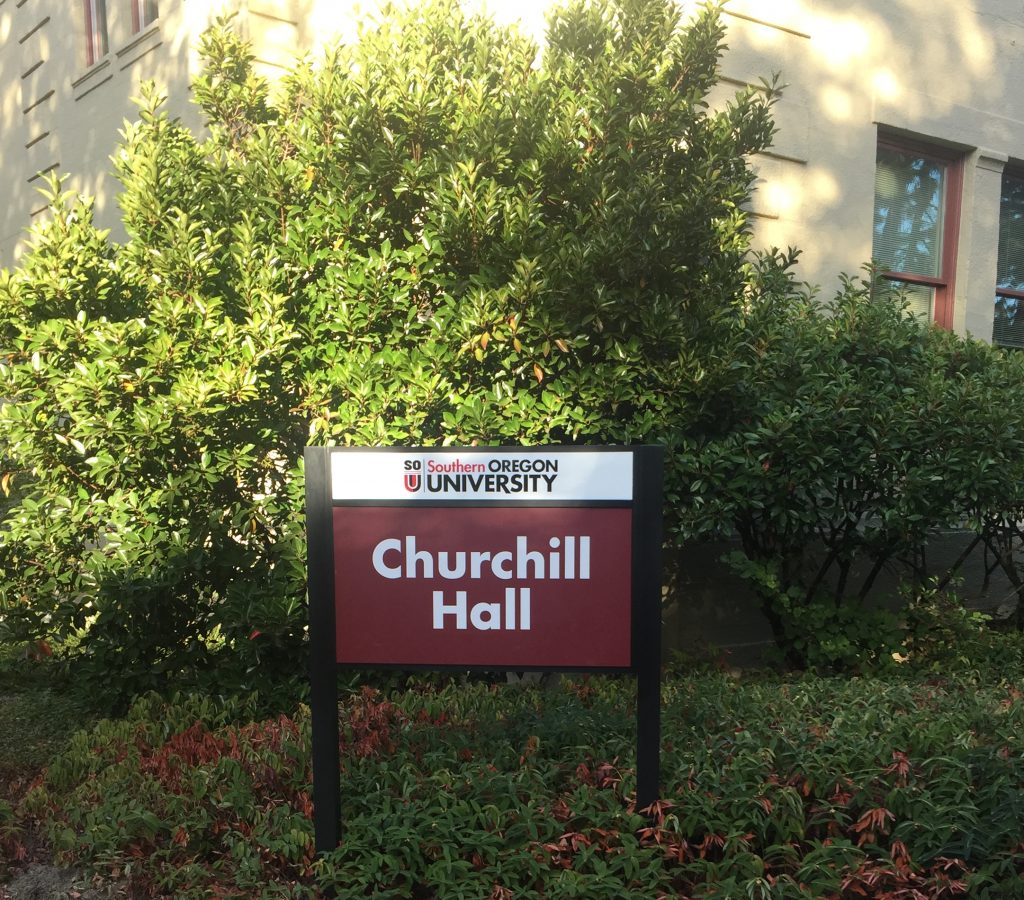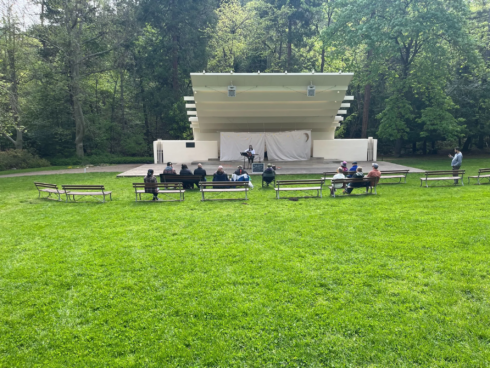
Outside Churchill Hall where the Provost and her team work.
Oct. 13th is the final day for Southern Oregon University’s current department of academic advising. The team of four advisers were notified they were being laid off July 12 as the school transitioned to a new advising model. Currently a centralized model with different advisers being found in the same building, the university is moving toward a division based model in which each division will have their own, specialized adviser.
Brett Harrington worked as an instructor for the University of Arkansas and Rogue Valley Community College and has seen both centralized and division advising models first hand. “I don’t disagree that this is a good model,” he said. “We [the advising department] don’t think it’s a bad idea.”
However, “there is a lot of value in having a centralized office for advising,” said Harrington. “Advising is a lot more complex,” he continued. “We have each other to ask questions. Hopefully the new model will have that as well.” While the new division advisers are in training, the current advising department is continuing to take drop-ins and appointments in this first week. “I definitely hope this works better for students and faculty,” said the Harrington. Harrington and the other advisers were invited to reapply for the new positions, but they declined.
“It’s a realignment, a shift,” clarified Lee Ayers, the General Education Division Director who works closely with advising. She explained that this advising model has become a trend on the national level in terms of best practices. “This structure provides many points of contact,” said the director. “We’re trying to support better messaging.”
According to Ayers, the new model will allow students to connect with advisers within their division and be introduced to “other opportunities sooner.” “There’s a lot of momentum here” said the Director. “We thought of advising as multifaceted. The emphasis is on opportunity and student retention.” “We want to do to make our student’s lives better. That’s at the heart and soul of everything we do,” she said.
ASSOU President Daryl Maplethorpe explained, “students don’t like the advisers being laid off, but really like the new structure that is being implemented.” “I think a lot of students are upset about the idea of having to build new relationships with new advisers,” she continued. “but like the idea of their adviser having connections with the departments and professors.”
The decision to make the transition came from the Provost Susan Walsh and Vice Provost Jody Waters. Walsh said the new model which will embed an adviser into each division will “guide them [students] down a pathway.”
“I think that the division adviser model, with the recruitment piece and the career piece is really a step above what we’ve been doing,” continued the Provost. “How do we keep students from falling into the abyss,” she wondered, “and get them engaged so that they’re at least generally identifying a disciplinary area—divisionally even, not a major.”
Vice Provost Waters explained that that the national research “was really encouraging– it was so consistent with what we understand to be emerging best practices.” “We have a number of different points of contact,” said Waters. “And excellent advising takes place at all of those points, but at the end of the day, there’s three and four sometimes more points of contact for students when they’re getting advising which is tough I think—even if it’s good advising.”
“This is a model that establishes a relationship with an adviser immediately even if it’s not the major and even if the major changes,” continued the Vice Provost. “It’s one point of contact. It’s one consistent set of information.”
According to Walsh and Waters, a transition plan is in place for these weeks leading up to the 13th. “For the 3 or 4 weeks between the start of school and the implementation of the new model, there’ll be more staff in academic support programs who’ll be available for drop-in hours as well as appointments,” said Waters.
As of now, the positions for division advisers have been chosen.



